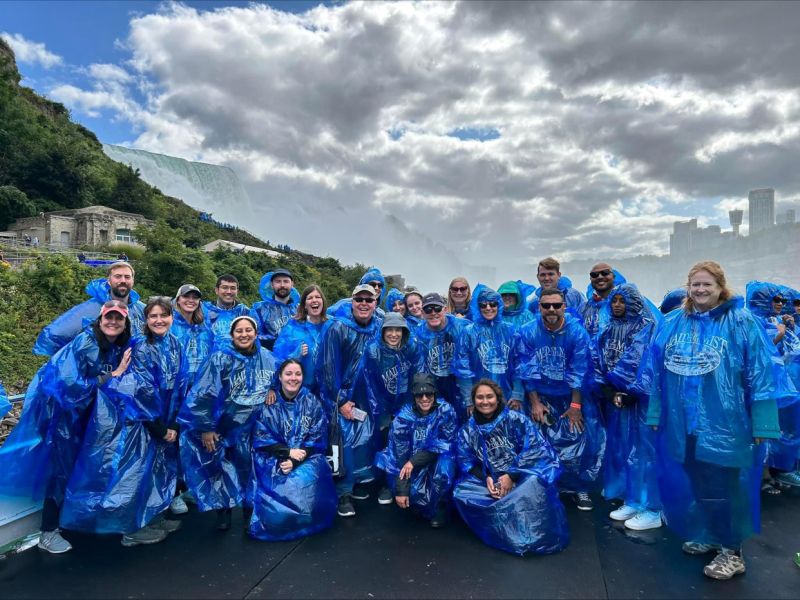
Destination organizations face decreased spending on leisure travel. Find out strategies for improving the visitor experience and become more competitive.
Previously community relations partners, destination organization executives are now community leaders influencing the economic success of their cities. They research trends, plan for future growth, and manage the city’s brand together. The teamwork extends to improving the visitor experience. Community members are getting involved with visitor experience education, from college courses to online training.
Some destination managers have nailed collaboration with other community leaders. Their strategic plans align with community goals. And they are positively affecting the city’s brand with exceptional visitor experiences. The strategic plans include ways of measuring both the return on investment and return on expectations of improvements in hospitality, destination knowledge, and marketing.

Your Visitor Experience Matters Now More Than Ever
Destination organizations are seeking innovative solutions to the big challenge of 2023/24: Americans are spending much less on leisure travel compared to recent years. The Destination Analysts team surveyed travelers on how much they expect to spend in the next 12 months. In January 2023 they said they planned to spend $4,677 on leisure travel. In a follow-up survey in August, their travel budgets had dropped to $3,505 – a 25% decrease and the lowest average leisure travel budget since fall 2021. The cost of fuel, inflation, and fear of a recession are all contributing factors. But Americans still want to travel.
Destination organizations are overcoming the challenge of fewer leisure travelers by becoming more competitive. According to this year’s DestinationNEXT Futures Study, organizations are focused on five priorities:
- Developing new destinations, products, and experiences;
- Community and economic development;
- Supporting small business and workforce development;
- Partner support and education; and
- Engaging and educating members of the community;
Knowing what to do is one thing. Finding the money to meet your goals is another. Thus, the number one strategy in the 2023 Futures Study is financing the future. Leaders are intent on keeping funding at current levels and finding new sources of revenue. Their job is easier when they are supplying an excellent visitor experience, and their stakeholders and community know it.
Craft a Strategy for an Outstanding Visitor Experience
Your brand promises how people will feel when they come to your destination. The visitor experience is how visitors feel when they are there. Organizations try many ways to improve their visitor experience, but in many cases, their efforts do little. The creation of a strategic plan related to the visitor experience usually leads to much greater satisfaction than acting spontaneously. Satisfied visitors return, post online reviews, and tell their friends.
An organization’s strategic plan for the visitor experience includes these components:
- Goals: Base the goals on the organization’s mission and vision.
- Measurable objectives: Find ways to measure results at the bottom of the sales funnel where visitors are making purchases. Learn about the latest measurement trends and tools in Adam Stoker’s interview with Mo Parikh from Bandwango on his podcast Destination Marketing.
- Tactics: may include visitor experience education, getting the right people in place, and involving people in developing policies.
- Calendar: Plan to succeed by putting every tactic on the calendar. Work around busy times, holidays, and vacations to avoid missed deadlines and tension on your team.
- Budget: Ideally, you will draft your strategic plan before budgeting season. Budget everything from visitor experience education to community engagement tactics. Be creative in your approach to moving money around to improve the visitor experience. It is a top priority.
- Evaluation: Every objective in a strategic plan must be measurable. Proving the plan worked will help you keep funds flowing for your visitor experience activities.
Treat ‘Em Right helps organizations strengthen their strategies for exceptional visitor experiences. We assess the needs of organizations and find solutions to routinely exceed customer expectations and convert visitors to be brand advocates who will blog, brag about, and most importantly – return to your destination.
Visitor Experience Tactics to Try Next Year

Before tackling a new visitor experience initiative, make sure you are exceeding your employees’ expectations. Once you drive the worker experience up, so follows the visitor experience. Then, review the research in DestinationNEXT and do your own research. Look at what is working and what needs to be improved within your organization and see what is working for others. You might even want to consider a DNEXT Diagnostic Tool. Many organizations are focusing on:
Visitor Experience Education: Engage key constituents in visitor experience education either online or in-person. The Treat ‘Em Right online visitor experience education program is popular with students in culinary arts, hospitality management, and other related fields. Organizations such as Visit Manhattan, Kansas, are having great success offering visitor experience education to retailers, hotels, restaurants, and other attractions. More iconic destinations like Destination Niagara Falls USA also engage Taxi and Uber drivers, AAA travel advisors, tour operators, and short-term rental owners as natural partners for visitor experience education.
Community Engagement: One of the most popular trends in visitor experience management is community engagement. Experience Columbia, South Carolina, is doing great work engaging residents as brand evangelists as featured on Bill Geist's recent DMOU podcast.
Many organizations are moving from experience to transformation to engage their communities. Transformative experience ideas include yoga retreats, workshops on art, and outdoor adventures.
Measuring Success in Visitor Experience Education
Rather than thinking of your development program as an investment in learning, think of education as an investment in your workforce. Measure its success in two ways: the return on expectations (ROE) and the return on investment (ROI).
Return on Expectations
When measuring ROE, learning and development professionals first work with leadership to define the goals of an education program. Then they design learning to meet the goals. Those targets may be:
- Behavioral: For example, a Welcome Center may target improvements in greeting guests.
- Learning-based: You may target your workers’ knowledge of things to do in your city.
- Outcome-based: Bars and restaurants may target more sales from upselling.
Whatever the targets are, success is measured based on those initial goals.
At Treat ‘Em Right, we educate our clients on what to expect from our online visitor experience and live education programs. We guide our clients’ expectations with information on how many people complete most online courses. For example, the completion rate for LinkedIn online courses is 15%. The completion rate for Treat ‘Em Right’s online programs is 86%.
Return on Investment
Return on investment, or ROI, is proof your education — which your DMO is putting time and dollars into — is paying off financially. Unfortunately, many organizations tend to see education as a cost, rather than an item that will indirectly increase visitor spending. They want proof their education programs are increasing their bottom line.
Training often does not affect a partner’s bottom line directly, but it does have an immediate impact in other areas — like visitor satisfaction, employee happiness, and job performance, and those things often can be measured financially.
When you have metrics, you can give leadership a correct assessment of your training program’s effectiveness, and a better idea of the ROI.
Get Help Improving Your Visitor Experience
Armed with information on how to measure success of visitor experience education, you are on your way to putting a program in place. Treat ‘Em Right creates custom solutions to help organizations improve their visitor experience and keep visitors coming back. Contact Phil Bruno at Treat ‘Em Right at 314-221-6037 to get the ball rolling.


